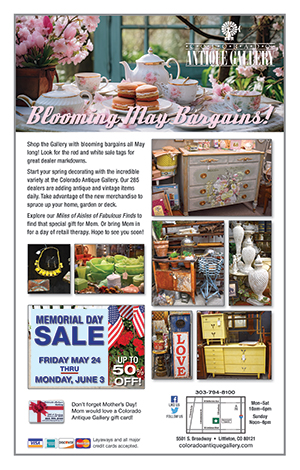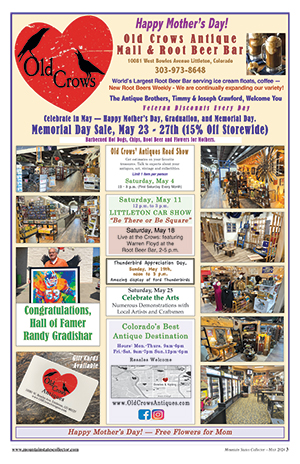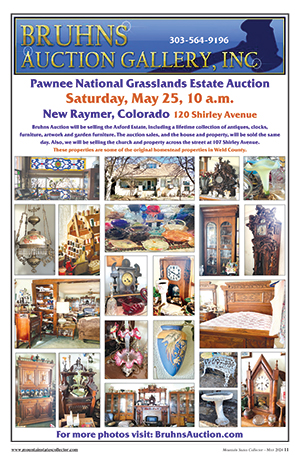 By Robert Reed
By Robert Reed Many years ago author Lester Margon described a pine and walnut cradle that had been made in Pennsylvania around 1750.
“Its design is a consummate delight,” Margon wrote in Masterpieces of American Furniture. “‘What a joy it must have been to sit beside this cradle and rock the baby to sleep, sending the little one off to dreams.”
That particular cradle of time had a “unique and attractive design” according to the author with ample size to hold a youngster several years if necessary.
Cradles, of course, have a long tradition in this country. One of the earliest items of joint construction known to exist in America is an oak-framed piece called the Pilgrim cradle, built between 1625 and 1675.
Early designs in Europe were box-like rectangular structure with metal or wooden carrying handles at the sides. These cradles were hung from the rafters in the various rooms and were often painted according to Constance King, author of Country Pine Furniture.
 In Sweden households had several hooks around the rooms “so the cradle could be hung in the most convenient position — near the parents’ bed at night or in a cool breeze in the summer.”
In Sweden households had several hooks around the rooms “so the cradle could be hung in the most convenient position — near the parents’ bed at night or in a cool breeze in the summer.” Both in Europe and America, various woods were sometimes used in the early cradles including expensive mahogany, but most were made of plentiful pine.
Swinging cradles were generally replaced in the 17th century by those mounted on wooden rockers. This basic design remained popular well into the 19th century. Rocker cradles were sometimes given flat or pointed hoods at one end that served to protect the infant from drafts common in households of the period.
Typically, across America, the cradles remained plain and were often the work of a family member or local carpenter. Most were dated and decorated simply with the child’s initials. However some were more elaborate with panels and carving, and others were even covered with leather or velvet, or some armchair material.
At Colonial Williamsburg, the James Geddy House bedchamber contains a hooded rocker cradle from the 1720s. Beside it is a doll’s cradle, almost identical in design but smaller in size. The hoods were often used for airing out the infant’s bed linens as people went about their housekeeping chores.
“The importance of a cradle in the life of a baby at the time cannot be over-emphasized,” notes Sally Kevill-Davis, author of Yesterday’s Children. The book takes an extensive look at the evolvement of the cradle.
“The child’s whole pattern of waking and sleeping revolved around this one piece of furniture,” the author adds.
It was basically the same around the country.
 Writing of a religious sect in Iowa during the second half of the 19th century, Majorie Albers observes:
Writing of a religious sect in Iowa during the second half of the 19th century, Majorie Albers observes: “When a Amana baby was born, a cradle was added. This piece, which was often passed along to families as needed, and more elaborate in design than the simple lines so evident in much of their furniture.
“The book, The Amana People and Their Furniture, concludes “the rockers were removable so the cradle could be used later as a stationary baby bed.”
Likewise the Mennonites of the late 19th early 20th centuries paid special attention to the construction of cradles.
R.K. Janzen and John Janzen document the group’s splendid work well in the artful book, Mennonite Furniture (Good Books):
“Characteristic of Mennonite cradles was the simplicity of their construction. The tapered box had dovetail joints and applied bead molding strips which defined the horizontal form. Two small handcarved hooks, knobs or ceramic drawer pulls, fastened to each side of the cradle, these secured the ties which held the infant’s blanket, as well as the child itself, in place.”
During the 19th century the nearly box-shape of the cradle with straight lines was gradually replaced by slanting slides, which, according to Kevill-Davis, “gave a more fashionable shape.”
Wicker cradles also enjoyed some popularity in the United States during the 19th century. They provided good ventilation during the summer weather, and as Kevill-Davis points out, “being light, portable and airy, they could be easily burnt and cheaply replaced in the case of an outbreak of infectious disease.”
Native Americans also created some classic cradles, particularly during the 19th century.
One of the country’s leading auction galleries, Skinner Inc., sold a Kiowa Plains Indian lattice cradle in 1992. “Plains Indians were nomadic and their objects reflected the mobility of their lifestyle,” according to Linda Dyer, director of Skinner’s Indian art and ethnographic department.
“The cradle was no exception,” adds Dyer, “having being in constant use for the fist two years of a child’s life; this piece was surely a treasured belonging, durably designed and beautifully decorated with beading in green, blue, rose and yellow.” It sold for nearly $40,000.
At the other end of the scale, the Thonet Bentwood & Other Furniture catalog of 1904 still offered two slightly different styles of cradle. The bentwood cradle, with decorative wooden loops, was a well-known import to the United States from Austria and Hungary during the latter 19th and early 20th centuries.
Other examples of cradles which have endured range from the distinguished Federal style of leading East coast furniture makers to the finely carved and painted works crafted by Midwestern folk artists.
Antique experts Judith and Martin Miller, authors of numerous books on the field, say generally that cradles have survived in original condition in greater numbers than their adult counterparts.
They add, “those which were often beautifully carved or painted to reflect a family’s social position at the time, are now fashionable and in demand.”
Writing in Country Pine Furniture, Constance King points out, “antique cradles have long attracted interior decorators, as they are small but attractive objects that look good in many settings. They can be piled high with logs by a fireplace or used as a small blanket chest with the contents tied, German fashion, with colored tapes or ribbons.”
Antique cradles can also be used to hold small books and trinkets or even treasured dolls.
“These cradles have always sold quickly, as they make fine christening gifts and are also valued by collectors,” adds King. “In the past, the cradle was moved room to room as required, and it now looks appropriate in almost any part of the house.”

















Follow Us